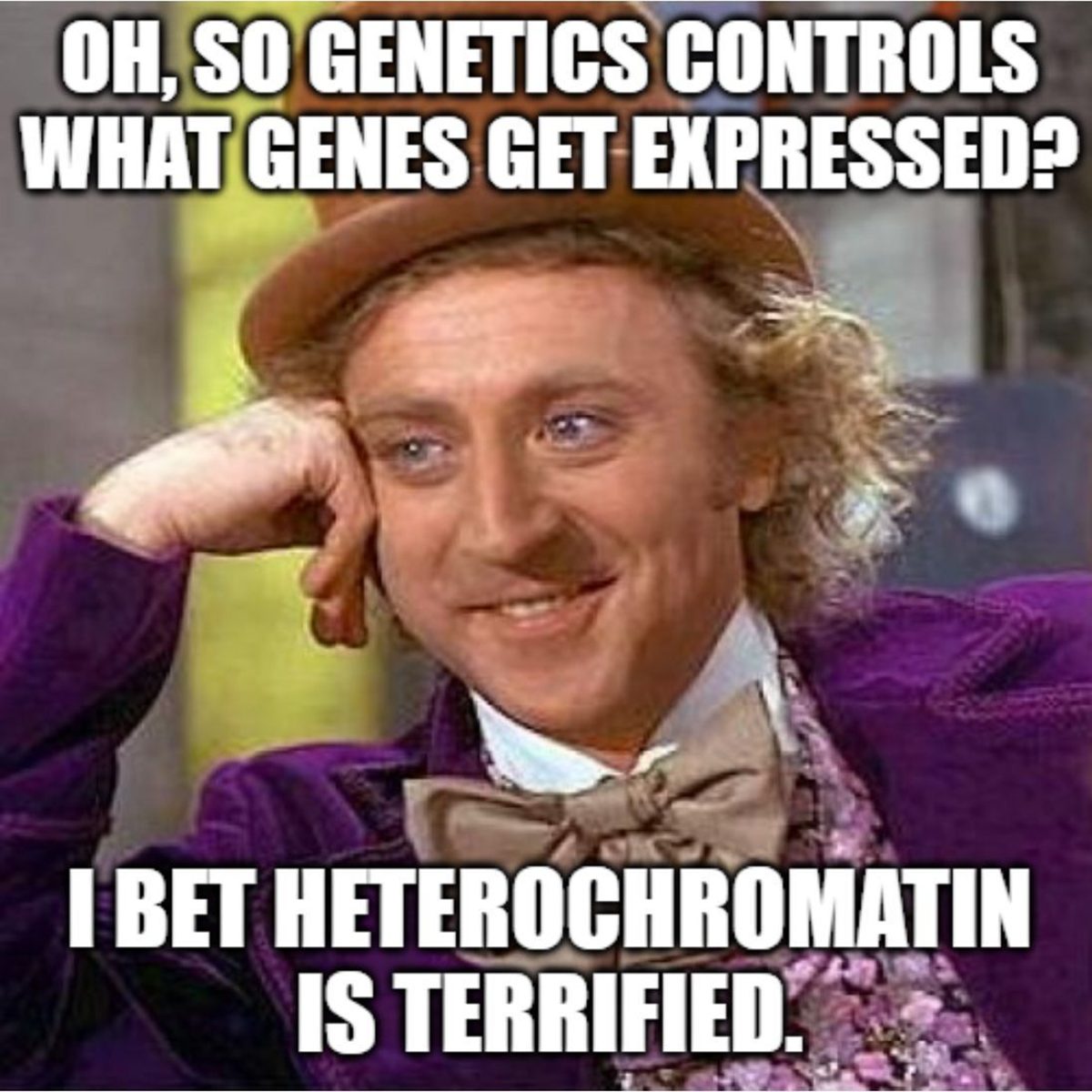Epigenetics is mostly about access
Epigenetics and Genome Topology: What are DNA methylation and histone modifications actually doing?

Epigenetics is the study of all of the non-DNA sequence alterations that affect how genes are expressed within our cells.
These include methylation of cytosines in DNA and modifications to histone proteins.
Much of introductory biology exhibits DNA as a linear molecule, but in complex organisms, DNA is actually wrapped up around histone proteins to form a DNA-protein complex called chromatin.
And chromatin is what makes up our chromosomes!
Cytosine methylation and histone modifications work together to physically regulate access to the genetic code and control gene expression by condensing (closing) or relaxing (opening) chromatin!
The technical terms for these two states are heterochromatin (closed/inactive) and euchromatin (open/active).
This is further complicated by the fact that our chromosomes spend the majority of their time in the nucleus jumbled together like a giant ball of yarn.
But even this jumble of chromosomes is important!
Today we refer to this as ‘genome topology’ and the 3 dimensional structures that our chromatin forms in the nucleus may look like a totally random mess, but it’s actually ordered with the establishment of specific domains of activity!
These are of course regulated by epigenetic factors (proteins) that recognize and bind to epigenetic modifications on DNA and histones.
For example, the role of cytosine DNA methylation is to recruit histone methylases that then methylate histones and cause the formation of tightly packed heterochromatin.
This prevents gene expression from these regions.
But there are also a whole host of factors that are involved in regulating genome topology with four of the most important being CTCF, Cohesin, chromatin remodeling proteins, and Polycomb Group proteins.
These proteins are responsible for creating Topology Associated Domains (TADs) and help to define the boundaries between active and inactive chromatin!
CTCF (CCCTC-binding factor): Is a highly conserved protein that binds to DNA and marks TAD borders. This activity forms ‘loops’ in chromatin and in many cases facilitates long range interactions between enhancers and promoters.
Cohesin: Helps establish 3D chromatin architecture by working with CTCF to form loops. It is required for loop extrusion, and is important for maintaining chromatin organization.
Chromatin Remodelers: The most well known of these are ISWI and SWI/SNF and they push histones around to open or close access to the underlying DNA.
Polycomb Group (PcG) Proteins: Act as repressors of gene expression to keep chromatin closed and maintain cellular identities by preventing the inadvertent activation of genes that are not compatible with the function of a particular cell type.
But ultimately, the activities of these proteins are determined by the epigenetic status of DNA and histones!
